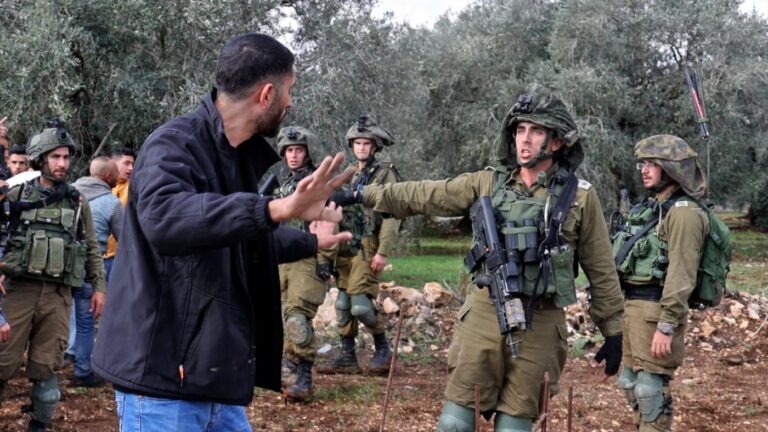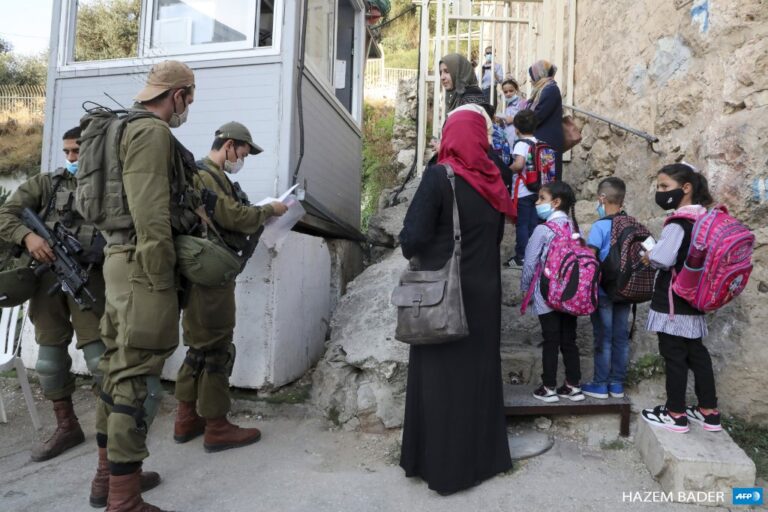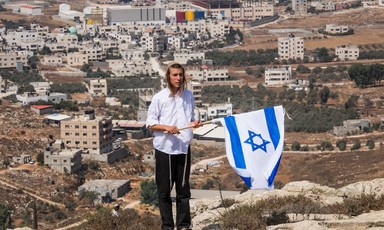Israel and its Cracks
I read a Thinking Fits post about Israel yesterday that I wrote in 2010. It didn’t feel like a lifetime ago, but if I’d had a child that year, they would be in 8th grade now. I know. It’s a rather depressing way of measuring the passage of time.
Prime Minister Benjamin Netanyahu had earlier, in 2009, cobbled together a coalition far-right enough to provoke handwringing inside Israel and out. It betrayed the general trend: the state’s boastful chauvinism was in step with much of society’s. But most critics viewed the implications primarily through the Israeli-Palestinian prism on both sides of the Green Line: the ever shrinking space for Palestinian Israelis and yet harsher conditions for Palestinians under siege or occupation.
I called the piece “The Collapse of Israel’s Narrative,” to lend meaning to the convergence of ominous facts and trends. I drew a line–a separation wall if you like–between the first 19 years of Israel’s life (1948 to 1967) and the second 43 years (1967 to 2010). I argued that what gave such overwhelming force and energy to the 1948 narrative, all deliverance and purity and heroism, bought by practically everyone bar Arabs and Palestinians, was collapsing under the weight of the occupation’s hideousness.

Thankfully, there was no cringe factor as I was reading the post. On the fundamentals, it’s very sound still. It’s the cracks’ impact on Israeli-Western relations that I misread. I thought they signaled an imminent reckoning of the loud kind–consequences with claws.
But even as Israel’s children grew more prickly with one another and more intolerant towards Palestinian Israelis; even as its appeal grew paler to younger American Jews and liberals; even as official support for it grew more partisan; even as its Jewish majority dwindled and its settlement activities rendered the two-state solution moot; even as some on the Israeli right began to echo warnings of the sure advent of Apartheid in the territories; even as Human Rights Watch and Amnesty International finally declared it so…there was little actual blowback from the West.
And so, Israel unbound and unchecked, went on indulging every predatory urge.

As I was reading the old post, it occurred to me that politics for us, in the Arab world, is like crack watching in Antarctica, only far more inexact. The status quo seems at once precarious and enduring. The appearance may be glacial but the cracks are many, quite visible, and structural. And so, the eternal question is: when does it all come tumbling down? And how? The 2011 Arab uprisings are a case study in our messy business of crack watching. And so is Israel.
That’s why I decided to read my post again. Palestine and Israel are back on my reading list and on the front page, with yet another intersection of menacing developments: a new Israeli coalition that includes the likes of Kahenist Itamar Ben Gvir, Jewish fundamentalist Bzalel Smotrich, and Ultra-Orthodox Areyh Deri. To its credit the coalition has saved observers much guesswork: it wants to entrench Jewish Israel between the river and the sea, even as it proceeds to remake it. It doesn’t only have Palestinian Israelis and the Occupied Territories in its sights, but Israel itself. It’s aiming inward.


Jewish Israelis have discovered that whatever parapets they have built between their world and the Palestinians’ are crumbling. The struggle, then, is no longer only between Israelis and Palestinians, two clashing but inescapably intertwined national identities, but between Israel’s own tribes, decidedly estranged now and very wary of one another.
In the 2010 piece, I wrote:
In the old days, Ashkenazi-secular was more than enough to describe [Israel’s] face. Now the new mélange of labels for her people, her body politic and armed forces is Mezrahi, religious Zionists, Ultra-orthodox, Haredi, settler, descriptors that act as illuminating guideposts to her unnerving religious and ideological trajectory.
And so, here we are: what Israel has always been for Palestinians, among them its own citizens, stood in stark contrast to what it has been for its Jewish core. This divide may have exposed its many serious imperfections as a democracy, but it also allowed it much license to wreak havoc outside its Jewish walls. It could with confidence demand the indulgence of those who loved it, however much its behavior eats into its pretenses.
We now watch the biggest crack of them all.
****
On Another Note
In reviewing Anton Shammas’ Arabesque for the Los Angeles Times in 1988, Muhammad Siddiq wrote, “If Hebrew literature is at all destined to have its Conrads, Nabokovs, Becketts and Ionesco, it could not have hoped for a more auspicious beginning.”
The review is especially poignant because Shammas is a Christian Palestinian Israeli–notice the compound identity I had to spell out for those not familiar with Palestinian-Israeli history.
I cite Arabesque in On Another Note this week, because it’s the New York Review of Books’ January selection. And because, to my shame, the citation reminded me that I have never read the book. It will download on my Kindle on January 17. To familiarize myself again with it, I read William H. Gass’ full review in the New York Times. And what a review it is:
THE book is divided into ”Tale” and ”Teller,” two voices that are given alternate, if not equal, opportunities. The Tale concerns itself with origins, with ”who I was,” and recreates the village life of the author’s family, sorting out aunts, uncles, brothers and cousins like clothes to be washed, and evoking the odors of bread and earth, the colors of sky and walls. Like many conquered and crisscrossed countries, the Holy Land is an active producer of orphans and the hunt here for a heritage among doubles and substitutes rivals anything in Dickens, who also specialized in displaced persons. The Teller (who has several points of view but only one voice) returns to the Tale the way Mr. Shammas himself returns from Iowa and Paris to the splintered Palestine of his past. The Teller and the Tale are one, an epigraph from John Barth intimates, but the division of the narrative into the Teller’s now, and the Tale’s then suggests a sundering which the search is attempting to heal. How is the ”what I am” to be reconciled with ”what I was”
